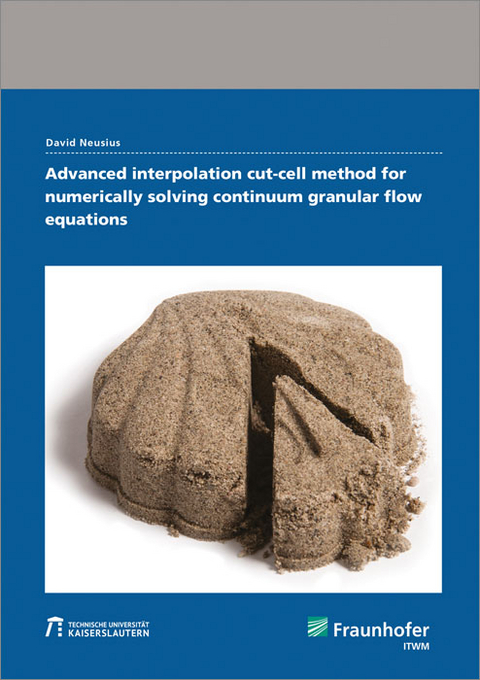Advanced interpolation cut-cell method for numerically solving continuum granular flow equations
Seiten
- Titel ist leider vergriffen;
keine Neuauflage - Artikel merken
Methods for well-approximating boundaries of complicated domains in numerical partial differential schemes are investigated. They are tested for applicability to solve non-Newtonian Navier-Stokes based systems of equations representing the behavior of granular materials. The interpolated cut-cell method (ICCM) has been developed for that purpose and is presented here.
The aim of this thesis is to develop methods for well-approximating boundaries of complicated domains in numerical PDE schemes. The main interest is in methods which can be applied to numerically solve a system of equations representing the behavior of granular materials. All considered methods are immersed boundary finite volume methods. A Cartesian cut-cell method is applied. Here, one starts from a Cartesian grid finite volume method and modifies cells that intersect the boundary. In contrast to adaptive or boundary fitting grids, the cutting process yields only local modifications. Therefore, the Cartesian structure can be sustained on the interior. The granular dynamics are modeled using a non-Newtonian Navier-Stokes based system, which covers both the dense and dilute regimes of granular flow. In addition to continuity and momentum equation, the model includes the granular temperature equation which is imperative in distinguishing between those regimes. Method derivations and numerical examples include both the two and three dimensional cases. The numerical results presented in this work have been computed in software developed by the author in C++.
The aim of this thesis is to develop methods for well-approximating boundaries of complicated domains in numerical PDE schemes. The main interest is in methods which can be applied to numerically solve a system of equations representing the behavior of granular materials. All considered methods are immersed boundary finite volume methods. A Cartesian cut-cell method is applied. Here, one starts from a Cartesian grid finite volume method and modifies cells that intersect the boundary. In contrast to adaptive or boundary fitting grids, the cutting process yields only local modifications. Therefore, the Cartesian structure can be sustained on the interior. The granular dynamics are modeled using a non-Newtonian Navier-Stokes based system, which covers both the dense and dilute regimes of granular flow. In addition to continuity and momentum equation, the model includes the granular temperature equation which is imperative in distinguishing between those regimes. Method derivations and numerical examples include both the two and three dimensional cases. The numerical results presented in this work have been computed in software developed by the author in C++.
| Erscheinungsdatum | 17.10.2016 |
|---|---|
| Zusatzinfo | num., partly col. illus. and tab. |
| Verlagsort | Stuttgart |
| Sprache | englisch |
| Maße | 148 x 210 mm |
| Themenwelt | Mathematik / Informatik ► Informatik |
| Mathematik / Informatik ► Mathematik ► Angewandte Mathematik | |
| Naturwissenschaften ► Physik / Astronomie ► Strömungsmechanik | |
| Schlagworte | Angewandte Mathematiker • Computer-Modellierung • fluid mechanics • Fraunhofer ITWM • Ingenieure • Mathematical Modelling • Mathematische Modellierung • Simulation • Strömungsmechanik |
| ISBN-10 | 3-8396-1086-9 / 3839610869 |
| ISBN-13 | 978-3-8396-1086-2 / 9783839610862 |
| Zustand | Neuware |
| Haben Sie eine Frage zum Produkt? |
Mehr entdecken
aus dem Bereich
aus dem Bereich
Buch | Softcover (2024)
Springer Vieweg (Verlag)
CHF 62,95
Anwendungen und Theorie von Funktionen, Distributionen und Tensoren
Buch | Softcover (2023)
De Gruyter Oldenbourg (Verlag)
CHF 97,90




